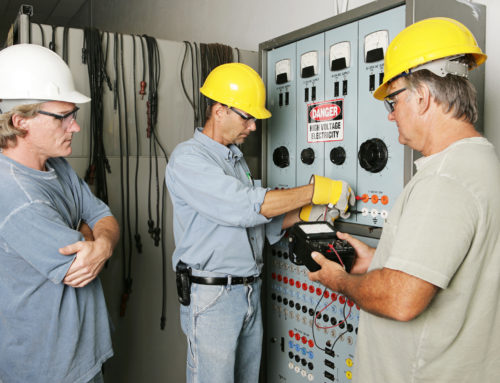Updated Data Cabling Improves Business Operations Dramatically
Updating your data cabling infrastructure can greatly improve your business operations with faster speeds. Find out how it works.

Technology continues to leap forward at lightning speed.
But is your company’s current data cabling infrastructure holding your business operations back?
Don’t be one of those companies that Forbes characterizes as having their “head-in-the-sand” because of inadequate network cabling infrastructure.
When it comes to improvements to your network, data cabling solutions don’t come in “one-size-fits-all” packages. You need to do some research to determine the best infrastructural upgrades for your unique business needs.
Read on for everything you need to know about network upgrades and how they can ramp up your business operations.
When to Say “Hasta la Vista, Baby” to Your Current Setup
Did you know that 70 percent of network problems are associated with inadequate cabling? Yet, cabling only accounts for a fraction of a company’s network deployment expenses.
What are some of the telltale signs that your current system needs an overhaul?
Insufficient data cabling leads to an unreliable network and decreased productivity. It requires lots of extra maintenance yet still performs poorly.
If any of this sounds familiar to you, then it’s time to look into the feasibility of a network upgrade. You have more options than you probably realize, so keep reading.
Most data cabling has a ten-year expiration date. But other non-age-related factors can also affect your system.
For example, if your setup doesn’t meet industry standards or was poorly designed, expect trouble before you hit the ten-year mark. Heck, under those circumstances, you might experience problems from the point of installation.
Cable systems can also get hampered by non-professional installation. Insufficient written documentation during the installation process can lead to a host of frustrating problems, too.
And if things appear bad now, expect them to get worse at your infrastructure ages further. At some point, your network will collapse, no longer able to support user traffic. Your stop-gap upgrades will no longer remedy the underlying problems of an inadequate system.
Instead of limping along, trying to sustain your network with upgrade band-aid after upgrade band-aid, get proactive before the final crash. Invest in new cable infrastructure before things start unraveling at your company.
Why Network Cabling Infrastructure Matters
Today’s businesses benefit from greater processing power and increased data capacity. These advances are revamping how companies of all sizes conduct business. In some cases, they’re leveling the playing field, too.
Of course, as more and more companies take advantage of new gains in productivity and efficiency, this also means competition proves more cutthroat than ever before.
Don’t let inadequate tech infrastructure bring your enterprise to a standstill. While new technologies give you a better chance of catching up, they also help your competition get exponentially further down the road.
The foundation of your business remains your IT network. Period. Without it, you can’t run communications, stay connected with your partners, or reach out to your clients.
Just think about the last time your company’s internet went down. How much business did you get done that day?
Of course, your IT network means nothing without reliable, adequate data cabling infrastructure. This system connects everything in your network. It controls (and limits) how fast your system can function.
That makes investing in an upgrade one of the smartest choices you can make. And one with longterm potential for your enterprise’s growth and ROI.
Determine Your Tech Needs
Hire a good IT team, if you haven’t already done so. Then, consult with them about your current network situation and what needs an upgrade.
Your cable network requirements will differ depending on the type of tech support you need.
For example, if you’re in the manufacturing or automotive industry, your needs will prove very different than a company looking for a reliable, high-speed internet connection in their conference room.
Write down which needs you have when it comes to your IT network. Then, do some research into the different types of cable networking available so that you can make an informed decision.
Again, trusted IT professionals can guide you through the process, ensuring you get the best fit based on your needs and budget. Once you determine how you’ll utilize your network, then you can make important decisions about whether or not to re-cable your current workspace.
You’ll also know which kind of cable best suits your current and foreseeable business operation goals. Let’s dive into various types of cable infrastructure to find the best one for your company.
Networking Cable Types
When it comes to different types of network cable infrastructure, they include:
- Category 5 (Cat5)
- Category 5e (Cat5e)
- Category 6 (Cat6)
- Category 6a (Cat6a)
- Category 7 (Cat7)
- Category 7a (Cat 7a)
- Category 8
In 1995, Cat5 proved standard at most facilities. And your company may still rely on this network infrastructure. But it will limit what you can do in terms of advanced IT technologies.
If you’d like your workplace to reap the benefits of the latest IT technologies, then consider an upgrade.
Since 2001, Cat5e cabling has been utilized. This copper cable utilizes a four-twisted pairs system with eight contacts. Cat5e increases rated transfer speeds over 100 meters to 350 Mbit/s. With optimized encoding, Cat5e cable works at speeds supporting Gigabit Ethernet.
When it comes to your business setup, both Cat5 and Cat5e networks will hold you back. The latest technologies require faster speeds and this trend will continue into the foreseeable future. Why put off the inevitable when you can start enjoying the many benefits of faster cabling now?
The Newest Networking Cable Types
Since 2002, Cat6 infrastructure has been on the scene. What can it do for your business? It can greatly expand your company’s onsite capabilities allowing you to utilize:
- Voice over Internet Protocol (VoIP) telephone systems
- Power over Ethernet (PoE) devices
- WIFI
- Cameras
- Automatic door access
Cat6 relies on 23 AWG conductors. It contains more pair twists per inch than Cat5e, which helps reduce signal interference and noise.
Besides faster speeds than Cat5, Cat6 also reduces “crosstalk errors.” (Crosstalk occurs when several cables located near one another cause interference.)
Cat6a will double your transmission frequency. It also supports 10-Gigabit Ethernet. It’s Shielded Twisted Pair (STP) reduces the threat of crosstalk even further.
Both Cat6 and Cat6a represent bigger investments, and so they’re recommended for companies who either own their building or plan to stay in the same spot for many years to come. They’re also perfect for companies who need robust technology in their conference room.
Cat6a will replace HDMI as the A/V transmission standard heading into the future. So, while a bigger leap, Cat6a represents a serious investment in the cutting-edge technologies of the near future.
Cat7, Cat7a, and Cat 8 cables probably represent overkill for your company at this point. Most businesses have no pressing need to update their hardware to this level. But, again, each one results in increased speeds and decreased crosstalk.
Fiber Optic Cable Options
Fiber optic cable harnesses light to transmit information instead of electricity.
The result? Much faster transmission rates.
As a result, this network cable type is an excellent choice for companies hampered by Cat6’s bandwidth limits. Fiber optic cables can also get run almost anywhere because of their use of light transmission. That means you don’t have to worry about electrical interference.
And because light proves such an effective means of transmission–with little resistance–you don’t have to boost the signal over long distances, either. In fact, some signals travel upwards of 5,000 miles.
What’s more, easy cabling makes installation a cinch. Both Active Ethernet (AE) and Passive Optical Networks (PON) have paved the way for smoother transitions to fiber optic networks.
But cost becomes the kicker when it comes to this alternative. Fiber optic networks prove costly, making the other types of network cabling mentioned in the previous section more attainable for most companies. But if you’re looking for a longterm investment, fiber optic cable will pay off over time.
Data Cabling Considerations
Upgrading your network cabling represents an investment not only in your company but also in the workspace that you occupy. How long you anticipate staying in your current geographical location should play an important role in your final decision.
For example, if you own your building and don’t think you’ll move anytime soon, then an investment in Cat6, Cat6a, or higher may pay off in the long run. The same goes for fiber optic cable. In this case, your final decision will come down to your tech needs and your current budget.
But if you lease your workspace, then you may have to bide your time and get by on standard cable until moving to a more permanent location. Again, this will also depend on your specific IT network needs and your budget.
As you think about how much you want to spend on network infrastructure, just remember that you get what you pay for. If you go cheap, you might find yourself replacing your system far more quickly than if you eat some extra costs and invest in higher-level cabling.
So, weigh your options and reach out to IT professionals before making your final decision.
Take Your Business to the Next Level
Interested in learning more about the best commercial electrical solutions for your company? Or, maybe you have questions about the way your business currently shares data and communicates with customers?
At Capitol Electric Co., Inc., we’re here to provide you with the best network data cabling infrastructure for your unique workspace needs. Let us help your company prepare for the future of technology with custom electrical solutions that’ll increase the efficiency of your business operations.
Contact us today to learn more about how we can help you.

